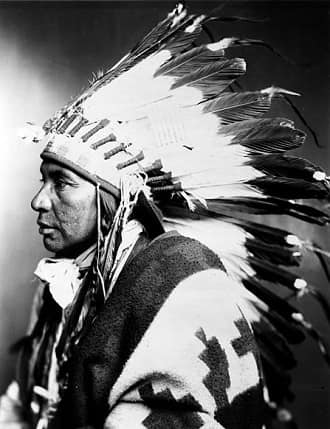
Shoshone Tribe Facts
The Shoshone Indians were a small Native American tribe of about 8,000 members, who occupied land both east and west of the Rocky Mountains and can be classified as Great Basin American Indians. These Native Americans were nomadic people who traveled throughout the Snake River area in Idaho, as well as parts of California, Wyoming, Nevada, Utah, Arizona, and Montana. They were called the "snake Indians", and sometimes they were called by the derogatory name "diggers" because they needed to dig for food such as roots from the ground. Below, we have listed many interesting Shoshone Tribe facts.
Click here for a great selection of Shoshone Indian books on AMAZONGeneral Facts about the Shoshone Indians
- Famous Shoshone People include Chief Little Soldier, Chief Pocatello, Chief Bear Hunter, Chief Washakie, and the most famous of the Shoshone, Sacagawea.
- They relied on hunting and gathering for their food sources. Shoshone people hunted animals such as buffalo, antelope, marmot, beaver, deer, elk, and fox. To preserve the meat for winter, they would sun-dry it and store it for eating, making clothing, and building shelters. They also ate many types of berries and nuts
- They are not known for their jewelry, but Shoshone artists are famous for their beautiful beadwork, woven baskets, art, and paintings, including those on tanned hides.
- The northwestern Shoshone were mistaken for Ute Indians when white settlers arrived in Utah for the first time. Similar to the Ute, they were nomadic; as the seasons changed, they traveled in small family units to where the most abundant resources were located.
- When the Shoshone were ordered out of their homeland during the Trail of Tears, the Fort Hall Indian Reservation, in Idaho, would become their new home.
- Lewis and Clark and their expedition party, the Corps, were the first white men that the Shoshone had ever come into contact with. Lewis and Clark were able to communicate through sign language and some basic terms, with the help of Sacagawea, that they meant no harm and had come in peace.
- Because they were nomadic, they had limited belongings and many temporary shelters. They made many enemies because they were known to steal horses from tribes in other regions such as the Crow and Pocatello tribes.
- They participated in several ceremonial dances: the sun dance, a religious festival that took place in the summer, and the Buffalo Dance, where women played the part of buffalo mostly for entertainment.
Shoshone Tribe Clothing Facts
- The Shoshone people wore different clothing for each season. Clothing in the summer was minimal, with men wearing a simple loincloth and women wearing a basic apron. When they needed to keep warmer during the winter months, they wore rabbit robes and pants or other type of fur.
- They used beads, shells, animal bones and teeth, and quills to decorate clothes made from animal hide.
- Men and women both wore moccasins made of animal hide and insulated with bark for warmth.
- Headpieces made of animal hide were decorated with different types of feathers.
The Shoshone Ice Caves
- This cave is actually a one-thousand-foot-long lava tube.
- The ice in the cave reaches a depth of thirty feet in some spots.
- A tall tale says that there is an Indian Ice princess buried inside the cave.
- In addition to a museum full of Indian artifacts, you'll also find a replica of Chief Washakie, leader to the Eastern Shoshone Indians, famous for his friendship and civility to white men.